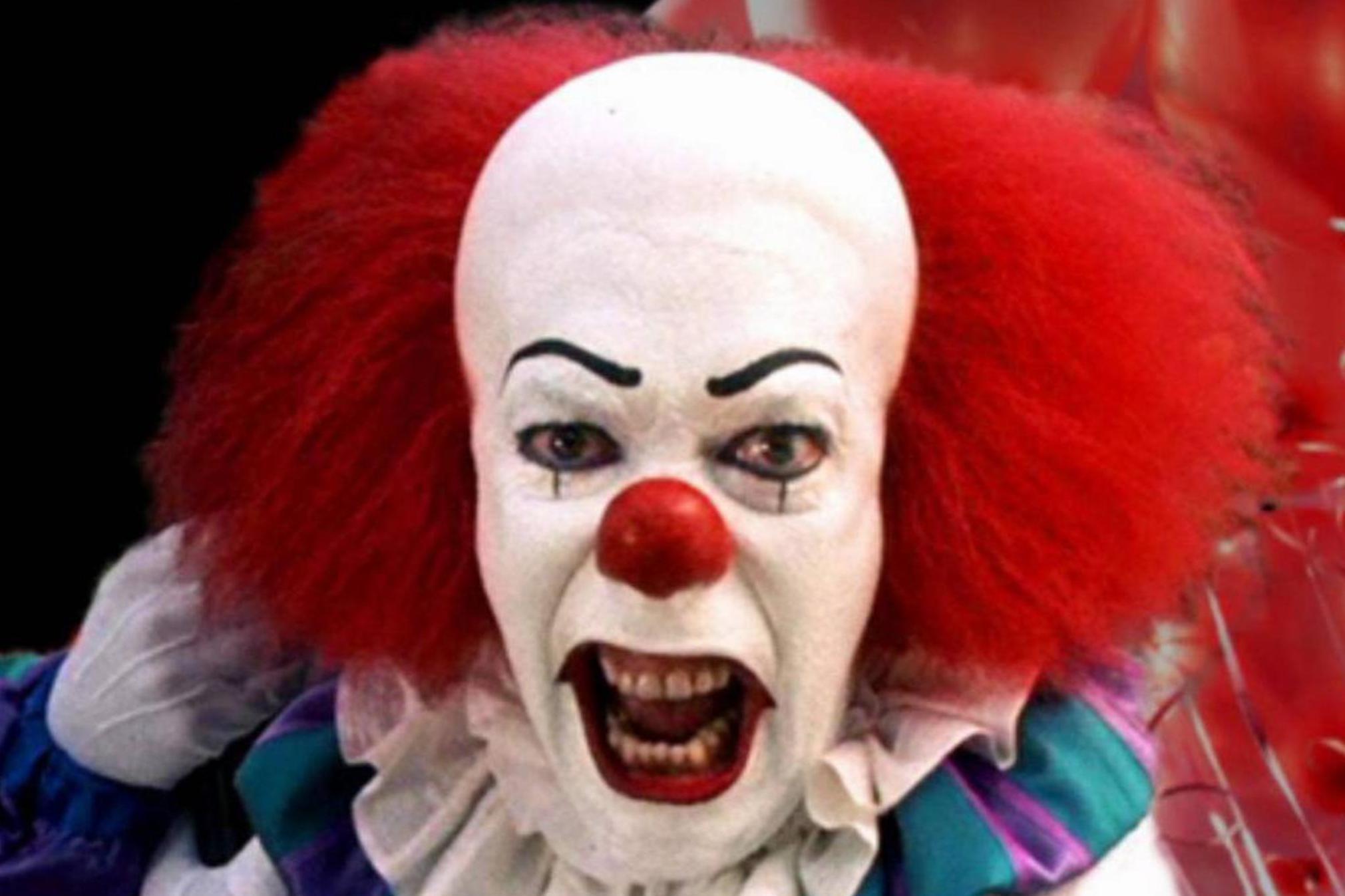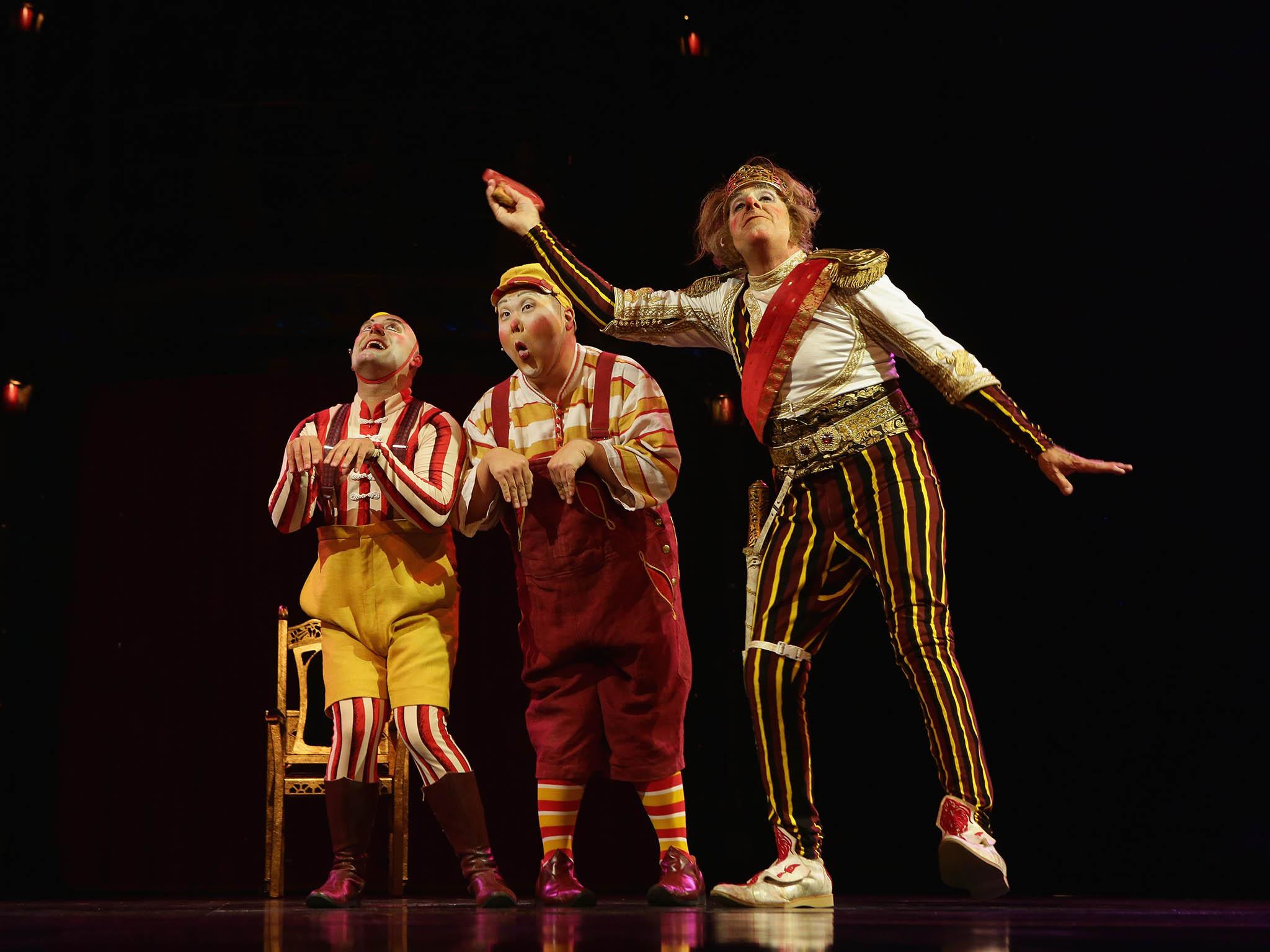Why people are scared of clowns
As a feature of circuses since time began, clowns have taken on a separate identity as being unpredictable and scary. David Barnnett looks at why people fear these supposedly fun creatures

Your support helps us to tell the story
From reproductive rights to climate change to Big Tech, The Independent is on the ground when the story is developing. Whether it's investigating the financials of Elon Musk's pro-Trump PAC or producing our latest documentary, 'The A Word', which shines a light on the American women fighting for reproductive rights, we know how important it is to parse out the facts from the messaging.
At such a critical moment in US history, we need reporters on the ground. Your donation allows us to keep sending journalists to speak to both sides of the story.
The Independent is trusted by Americans across the entire political spectrum. And unlike many other quality news outlets, we choose not to lock Americans out of our reporting and analysis with paywalls. We believe quality journalism should be available to everyone, paid for by those who can afford it.
Your support makes all the difference.Clowns: joyful, brightly-coloured purveyors of fun and frolics, or sinister, leering creatures with anything but happiness on their minds?
If you fall into the former camp, you seem to be in a minority. Despite their protestations that all they want to do is help you have a good time, clowns are viewed by most of us as something deeply disturbing.
Which is possibly why every now and again a rash of sightings surfaces somewhere in the world of a creepy clown that puts the rumour mill in a tailspin and has parents calling in their children at dusk.
The latest place to be afflicted by the curse of the killer clowns is North Carolina in the US. The Washington Post soberly reported last week that on the streets of Greensboro a local man came face-to-face with a clown which “wore typical big-tent get-up – a wig of red curls, too-big shoes, blue trousers and a shirt with yellow polka dots – topped off with a scary mask”.
For reasons not properly explained, the man who saw the clown happened to be carrying a machete and, brandishing his weapon, chased the clown into some nearby woods, where it gave him the slip.
A Greensboro police department report issued last Friday said, “Although it is lawful to dress as a clown, given the heightened tensions about these entertainers, officials are discouraging ‘copycat’ behaviour by individuals who may find it humorous to mimic suspicious behaviour. Copycats unnecessarily alarm the public and place an unnecessary drain on police resources.”
Heightened tensions? Over clowns? Well, yes, because the Greensboro clown was not the first in that neck of the woods. According to the Washington Post, there have been half a dozen “sightings” of sinister clowns in North and South Carolina in recent weeks, with reports ranging from “several clowns in the woods flashing green laser lights” to “a clown with a large, winking nose was hanging out near the dumpsters” to a gang of clowns hiding out in trees trying to entice children to them: “Some had chains, some had knives, and some were holding out money, saying, ‘Come here, we’ve got candy for you’,” says one report.
And this isn’t just an American problem. Three years ago, rumours of a clown prowling the streets of Bradford, West Yorkshire, was big news for a short while, with “sightings” and reports reaching almost hysterical levels; the clown was peering in windows, committing robberies and even stabbing innocent passers-by said local people, prompting a West Yorkshire Police spokesman to issue a statement: “This seems like it might be a hoax. We haven’t had any reports of crimes committed by a clown, I can say that much.”

Around the same time there were sightings of the so-called “Chesterfield Clown”, and earlier this year the clowns surfaced on Teesside, with reports in May of sightings in Middlesbrough, Stockton and Hartlepool.
Then, as swiftly as they arrive, the clowns leave… or at the very least, people stop talking about seeing them. And children can play out again, parents breathe a sigh of relief, and children’s entertainers can go about their business without fear of being chased with a machete. Until the next sighting, that is…
But why clowns? Well, fear of the grinning, painted loons is a recognised condition – coulrophobia is thought to affect as many as 12 per cent of adults. And though, with their buckets full of confetti and poorly-maintained cars, they’ve been a feature of circuses since time immemorial, many of us just don’t find them funny. Which is why Stephen King’s 1986 novel IT, featuring a demonic clown called Pennywise (who’s coming to cinemas in 2017, just so you know) still terrifies people 30 years on. It’s why Batman’s arch-nemesis the Joker is so unpredictable and scary. It’s also why a 2006 study by the University of Sheffield called for hospitals not to decorate their children’s wards with clowns. Dr Penny Curtis, a senior lecturer at the university, said at the time, “As adults we make assumptions about what works for children. We found that clowns are universally disliked by children. Some found them frightening and unknowable.”
So that’s why clowns. But why do we keep seeing them, from West Yorkshire to South Carolina? Do these sinister clowns hiding in the shadows actually exist?
“It might well be that someone has seen a clown, maybe an entertainer on his way to a party, or someone advertising something, or even near a visiting circus,” says Prof Cary Cooper, Professor of Organisational Psychology and Health at the University of Manchester. “It could be that people simply make up the sightings, perhaps to put themselves in the limelight or get some attention on them. It could even be a cry for help in some cases.
“But what’s interesting from a social psychology viewpoint is when the rumours kick in and people start to spread these sightings. Someone tells a friend who tells another friend and so it goes, it spreads like wildfire. And nowadays the internet and social media helps that, it isn’t just word of mouth that goes around, say, a town in South Carolina, it gets on social media and goes across the world almost instantly.”
And with each retelling of the supposed sighting, the story becomes more and more embellished, and that’s human nature, says Prof Cooper. A few years ago when he was at Southampton University he tried an experiment; he sent half a dozen people out of the lecture theatre and then had a pre-arranged incident where someone ran into the classroom and ran out again. One by one he brought the students back; those who had remained in the classroom told the first student what had happened, and that student had to tell the next one to come in, and so on.
“By the time the last student got the story, the description of the person who had run into the class was completely changed from what had actually happened – even down to their ethnicity.”
Which goes some way, perhaps, to explaining why some poor guy on his way to a kids’ birthday party ends up, several days later, morphing into a knife-wielding demon out to kidnap small children.
Clowns seem to be the most popular iteration of these mini moral panics, but they’re by no means the only creatures that get us worked up. Anyone remember the Werewolf of Hull? In May this year there were dozens of sightings of an apparently eight-foot tall beast with huge fangs around the Barmston Drain canal near Beverley, which folklorists linked to the ancient local legend of “Old Stinker”.
And such things are not limited to the internet age; you can go back as far as you like for sightings of spectral hounds or ghostly black big cats. Victorian England was terrified by Spring Heeled Jack, a claw-fingered phantom with glowing red eyes who was seen, according to reports, across London, the Midlands, Lancashire and Scotland.
“We are attracted to the idea of something unusual being out there,” says Prof Cooper. “Many of us lead humdrum lives, we go to work, we come home, and then suddenly there are these tales of strange creatures or people, and we love to pass those stories on, to talk about them.”
Be careful, though, because the clowns – whether real or imagined – can get people into all kinds of trouble. Take David Armstrong who called police on Friday to say a clown had knocked on his window and he’d chased it into nearby woods near his home in Winston-Salem, North Carolina.
On Tuesday this week Armstrong was charged with filing a false report to the police. Evidently, after dealing with clown sightings since August, the North Carolina constabulary have decided – like so many of us these days – that clowns are simply no laughing matter.
Join our commenting forum
Join thought-provoking conversations, follow other Independent readers and see their replies
Comments